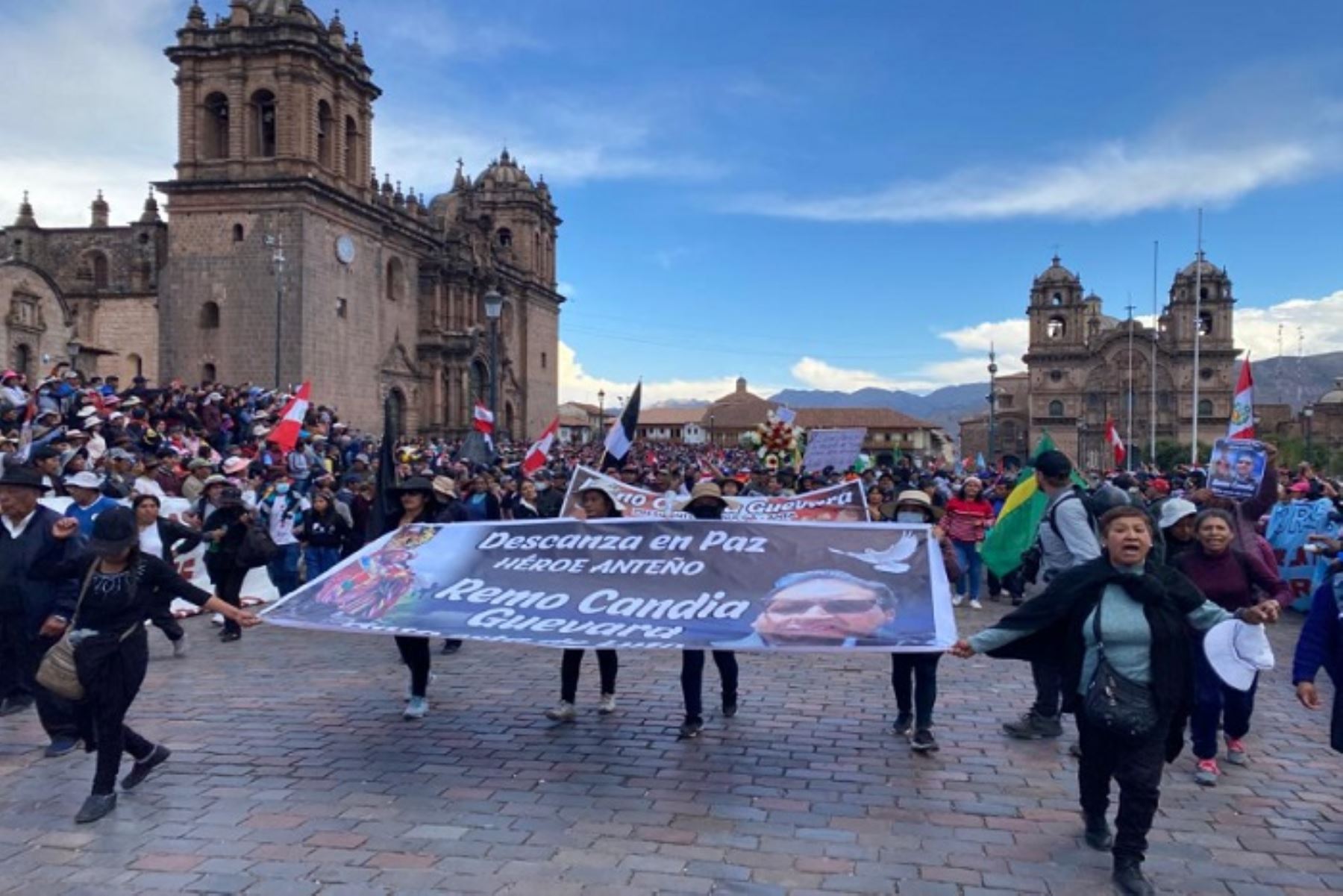
CUSCO (Peru), Jan 18 (NNN-ANDINA) — The standstill implemented by a sector of the population in Cusco severely affects the tourism sector. Moreover, the region’s Chamber of Commerce confirmed that 90% of reservations have been canceled until the end of March.
The organization said that out of the 3,000 tourists who used to visit Cusco daily, very few travelers arrive in the region now.
They were able to do so via irregular flights (due to the attempts to take over Alejandro Velasco Astete International Airport), passing through blocked roads after truces or simply walking alongside demonstrators and picketers who remain on the roads.
“Cusco’s Main Square looks like a desert. Machu Picchu may be receiving some 200 tourists a day, or 300 in the best possible scenario. The other (archaeological) parks also look desolate,” John Gonzales, head of the Cusco Chamber of Commerce, said in statements to Andina news agency.
The spokesperson estimated that 60% of people in Cusco depend (directly or indirectly) on tourism, as they are part of the chain comprised of hotels, restaurants, farmers, tour guides, carriers, artisans, among others, which is totally affected now.
The political crisis, constant demonstrations, road blockades, deaths caused by clashes between the police and demonstrators, and the emergence of vandals who commit looting, echo around the world because the tourists who managed to leave the country and the international community recommend not visiting Peru.
“They say that, on the one hand, Peru is beautiful, Cusco is beautiful, but there is a lot of insecurity; and, on the other hand, they recommend not visiting Peru due to the level of insecurity,” Gonzales explained.
“The latest recommendations came from the United States and Canada. Chile, Brazil, Ecuador, and Colombia did the same before, and I also read on social media that in Europe it is being suggested that people should not come to Peru, which shows a chaotic situation,” he added.
Meanwhile, if the unrest persist the traditional Virgen de la Candelaria festivity (one of the most important celebrations in Peru) will not take place, and not only tourism but also investment in the sector will be affected, said Peruvian Association of Travel Agencies and Tourism of Puno.

Raquel Laura Asillo, the association head, stressed the need to hold the La Candelaria festival; otherwise, the consequences may be very serious for the region, as one of the main pillars of Puno’s economy is the February festivity.
“We lament what happened to so many victims, and we respect the pain of relatives, but the situation will be more serious if La Candelaria festival is not held, even more so if it is an activity that has not been held since 2021 due to the health pandemic,” she explained.
In remarks to Andina news agency before the events of recent days, the association’s head estimated daily economic losses at S/250,000 (about US$66,102) in the accommodation, tour, and restaurant domains.
Furthermore, she said that 98% of reservations had been cancelled since the first protests began in December and all of January, “because for us this month has been lost already.” Yet La Candelaria is celebrated in February, which brings in more than S/100 million (US$26.44 million) in revenue.
“We hoped that the sector was going to recover as of February and reservations were going to remain in place because the most important festival was back, but unfortunately, due to these events, this is not the case and cancellations have begun,” Laura Asillo stated.
“Besides, if the situation does not get better in the south of the country, it will be very complicated,” she added.
The officer noted that investment has been made toward this festivity, in terms of costumes, infrastructure, musicians, reservations, and other related issues, which can be lost if the festival is not held. — NNN-ANDINA
